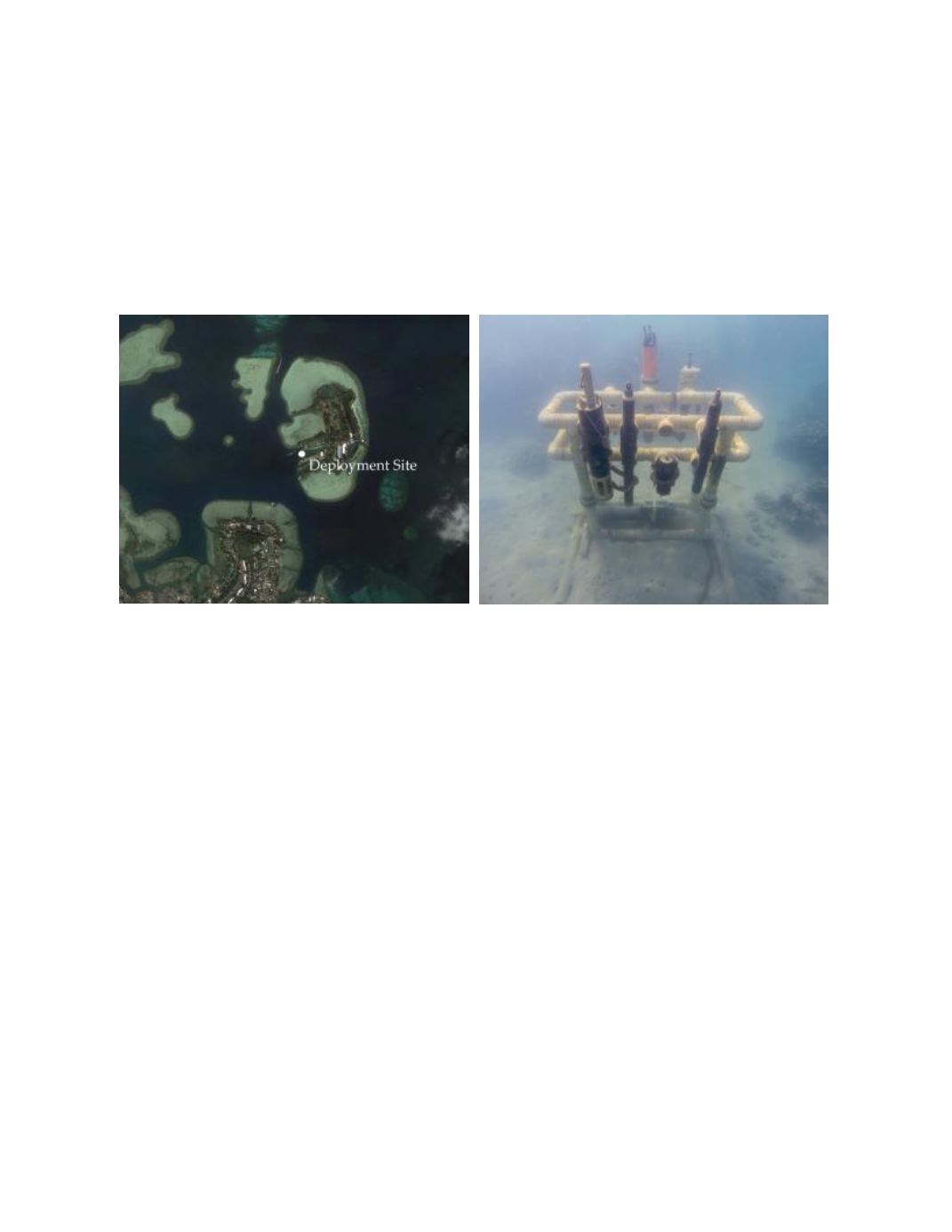

Ref. No. [UMCES] CBL 2016-014
ACT VS16-05
36
Moored Deployment off Coconut Island in Kaneohe Bay, Hawaii
An 18 week long moored field test was conducted in Kaneohe Bay from September 22,
2015 to January 20, 2016. Both the HL4 and DS5X were tested at this site. The deployment site
was located at 21.43° N x 157.79° W, on the fringing reef flat surrounding Coconut Island (HIMB)
in a depth of 3 meters (Photo 4). Kaneohe Bay, located on the eastern side of Oahu, Hawaii, is a
complex estuarine system with a large barrier coral reef, numerous patch reefs, fringing reefs, and
several riverine inputs. Tides in Kaneohe Bay are semi-diurnal with mean tidal amplitude of
approximately 68 cm day.
Photo 4.
Aerial view of HIMB deployment site (left) and instrument rack in-situ (right).
Time series results of ambient conditions for tidal height, temperature, and salinity are
given in figure 5. Temperature at the sensor level ranged from 23.1 to 29.1
o
C and salinity from
27.3 to 34.7 over the duration of the field test. The bottom panel displays the maximum difference
recorded between all reference thermistors mounted at the same depth but located across the
mooring rack. The average temperature difference observed across the space of the mooring rack
was 0.15 ±0.17
o
C, with a maximum of 1.23
o
C. Differences between instrument and reference
readings resulting from this variability should be minimized as the sampling bottle integrates
across the mooring space.
The HACH HL4 stopped functioning on 10/25/15, 33 days into the deployment. The
instrument generated 740 observations out of a possible 2827 based on its scheduled 60 minute
sampling interval for the 17 week deployment. The data completion rate for this deployment was
26%. Upon retrieval it was determined that the battery compartment flooded. Time series results
of the HL4 and reference DO results are given in figure 10. Ambient DO measured by the HL4
ranged from 2.02 to 10.88 mg/L while the range captured by reference samples was 3.630 to 9.851
mg/L. The average and standard deviation of the differences between instrument and reference
readings (n=39 of 129 potential observations) were 0.217± .322 mg/L, with a total range in the
differences of -0.725 to 0.769 mg/L. The drift in instrument response showed no statistically
significant trend over time based on a linear regression of the data (slope = 0.0007 mg/L/d; r
2
=
0.0004; p=0.91). This rate would include any biofouling effects as well as any electronic or
calibration drift.
















